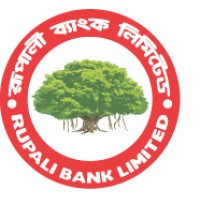Company Cyber Security Posture
NANA
NA Company Details
NA
NA
NA
NA
NA
NA
Scan still pending
NA
NA
Between 200 and 800
This score is AI-generated and less favored by cyber insurers, who prefer the TPRM score.
 NA Global Score
NA Global Score.png)

Company Scoring based on AI Models
| Model Name | Date | Description | Current Score Difference | Score |
|---|---|---|---|---|
| AVERAGE-Industry | 03-12-2025 | This score represents the average cybersecurity rating of companies already scanned within the same industry. It provides a benchmark to compare an individual company's security posture against its industry peers. | N/A | Between 200 and 800 |
Company Cyber Security News & History
| Entity | Type | Severity | Impact | Seen | Url ID | Details | View |
|---|
Company Subsidiaries

NA
Access Data Using Our API

Get company history
.png)
NA Cyber Security News
Companies of Schwarz Group and Handball-Bundesliga Launch Partnership
The companies of Schwarz Group will be entering into a long-term strategic partnership with the Handball-Bundesliga (HBL) as of 2025. The ...
HBL Engineering bags ₹132.95 cr railway contract for Kavach safety system
Hyderabad-based company HBL Engineering Limited, formerly known as HBL Power Systems Limited, has secured a significant contract valued at ₹ ...
UET launches Associate Degree programme
LAHORE:For the first time in the history of the University of Engineering and Technology (UET) Lahore, two-year degree programmes have been ...
Cyber Risk Scoring With World CyberCon META Cybersecurity
One of the most interesting panel discussions during the The Cyber Express World Cybercon was centered around cyber risk scoring. META Cybersecurity. The ...
HBL Leads Cybersecurity Efforts in Pakistan
Building on its tradition of leadership in cybersecurity, HBL sponsored the 16th International Information Security Conference, ...
1LINK debunks cyber threat rumors, reassures public on ATM and online banking security
In its press release, 1LINK reassured citizens that the State Bank of Pakistan (SBP), along with banks and 1LINK, is diligently working to ...
Working Safely From Home - A Labour Day Special
The pandemic has increased organisations' exposure to hacking attempts through their employees who are working from home.
CTM360 and HBL Microfinance Bank Pakistan join forces
CTM360 is a unified external security platform that integrates External Attack Surface Management, Digital Risk Protection, Cyber Threat ...
Mandatory cybersecurity audits for telecom, power sector
As the electricity sector plays a crucial role in running the country and supporting business operations, enhancing the level of security at the ...

NA Similar Companies

Garanti BBVA
With a digitalization and people oriented vision, we contribute to our economy and society. We make great efforts to help you make the best financial decisions by offering you the opportunities of the future with our dynamic business model, pioneering technology and innovative products and services.

Rupali Bank Limited
Rupali Bank (Bengali: রূপালী ব্যাংক) is a commercial bank in Bangladesh. It was established as a nationalised bank in 1972 under the Bangladesh Banks Nationalisation Order, through the amalgamation of the branches of Muslim Commercial Bank, Australasia Bank and Standard Bank that were operating in E

Groupe Crédit Agricole
Crédit Agricole is the French economy’s leading financier and one of the top banking operators in Europe. As a leader in retail banking in Europe, the Group is also the leading European asset manager, the first bank insurer in Europe, and the third largest European operator in project financing. On

IDBI Bank
Welcome to IDBI Bank's LinkedIn page! We are a leading bank in India, with a rich legacy. At IDBI Bank, we believe in empowering our customers by providing them with a wide range of banking products and services to meet their financial needs. Whether you are an individual, a small business owner,

OCBC
OCBC is the longest established Singapore bank, formed in 1932 from the merger of three local banks, the oldest of which was founded in 1912. It is now the second largest financial services group in Southeast Asia by assets and one of the world’s most highly-rated banks, with an Aa1 rating from Mood

BMO U.S.
At BMO, banking is our personal commitment to helping people at every stage of their financial lives. The truth is, people’s needs change: so we change too. But we never change who we are. Which means we’ll never waiver from providing our customers the best possible banking experience in the indust

Frequently Asked Questions
Explore insights on cybersecurity incidents, risk posture, and Rankiteo's assessments.
NA CyberSecurity History Information
How many cyber incidents has NA faced?
Total Incidents: According to Rankiteo, NA has faced 0 incidents in the past.
What types of cybersecurity incidents have occurred at NA?
Incident Types: The types of cybersecurity incidents that have occurred include .
Additional Questions
What Do We Measure?
















Every week, Rankiteo analyzes billions of signals to give organizations a sharper, faster view of emerging risks. With deeper, more actionable intelligence at their fingertips, security teams can outpace threat actors, respond instantly to Zero-Day attacks, and dramatically shrink their risk exposure window.
These are some of the factors we use to calculate the overall score:
Identify exposed access points, detect misconfigured SSL certificates, and uncover vulnerabilities across the network infrastructure.
Gain visibility into the software components used within an organization to detect vulnerabilities, manage risk, and ensure supply chain security.
Monitor and manage all IT assets and their configurations to ensure accurate, real-time visibility across the company's technology environment.
Leverage real-time insights on active threats, malware campaigns, and emerging vulnerabilities to proactively defend against evolving cyberattacks.




